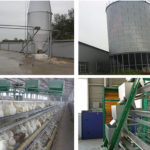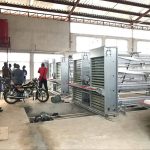Establishing a fully automatic poultry farm for 20,000 layers is a major agricultural investment, particularly in growing markets like Nigeria. While the potential for profit and scalability is high, the initial capital requirements can be substantial. The total cost depends on several interlinked factors, ranging from land and construction to automation and long-term operations.
Below is a structured overview of the major components that determine the cost of building and running a modern, fully automated egg-laying facility.

🏞 1. Land Acquisition & Site Preparation
The first step in setting up a poultry farm is securing a suitable piece of land—ideally 1 acres. The location affects not only land cost but also logistics, biosecurity, and utility access. Farms closer to roads and water sources often reduce operating costs but increase initial acquisition expenses. Additionally, site preparation (clearing, leveling, fencing) adds to the groundwork phase.
🧱 2. Construction of Poultry Housing & Infrastructure
A robust poultry house is essential for bird health, productivity, and long-term durability. In a 20,000-layer facility, this usually means multiple large sheds or one segmented, well-ventilated structure. Proper insulation, ventilation systems, feed storage rooms, walkways, and drainage must be integrated. The more automated the system, the more precisely the building must be planned to support equipment installation.

⚙️ 3. Automation Systems: Where Efficiency Begins
At the heart of a modern poultry operation lies automation—designed to reduce labor dependency and improve consistency. Core systems typically include:
- Automatic feeding and watering systems
- Ventilation and climate control (fans, cooling pads, sensors)
- Egg collection systems
- Manure removal conveyors
These systems are often imported or sourced from specialized local manufacturers and require careful integration during construction. While the initial investment is higher than manual or semi-automated setups, the long-term savings and production stability often justify the cost.
🪶 4. The Role of Layer Cage Systems
One of the most critical investments in a 20,000-layer farm is the layer cage system, which directly impacts bird welfare, egg production, and operational flow.
Modern chicken cage systems are designed for:
- High-density, space-efficient housing
- Easy access for feeding, egg collection, and health checks
- Durability and hygiene, using galvanized steel or anti-corrosive materials
- Compatibility with automation, including manure belts and egg trays

Choosing the right layer cage system is not just about cost—it’s about long-term productivity. Poor-quality cages may lead to health issues, broken eggs, or frequent repairs. A well-chosen system enhances egg output, reduces labor, and contributes to a more sanitary environment.
🐥 5. Livestock, Feed, and Health Management
The success of the farm also depends on the quality of the point-of-lay pullets introduced. Feed costs, vaccinations, and preventive treatments for disease form a significant part of recurring expenses. While these are not part of the setup cost per se, they must be factored into the working capital required during the first production cycle.
⚡ 6. Power, Water & Utilities
A fully automated farm requires a stable and uninterrupted power supply. In regions with unreliable electricity, installing diesel generators or solar backups becomes necessary. Water systems (boreholes, storage tanks, pipelines) are also crucial, especially since hydration and cleanliness directly impact production rates and bird health.

📊 Total Investment Considerations
While it’s difficult to attach a fixed number to the total cost without knowing specific choices (location, degree of automation, brand of equipment), investors should expect to budget across all the above components. The layer cage system and automation equipment typically represent the core of the capital expenditure, especially for farms aiming for long-term efficiency and lower labor costs.
For those looking to scale operations or build a brand in egg production, investing in reliable poultry infrastructure—particularly the right cage systems—is not just a cost, but a strategic decision.
✅ Final Thoughts
Building a 20,000-layer automatic poultry farm isn’t just about buying land and birds—it’s about designing a system that works around the clock with minimal human input. From automated egg collection to climate control, every part of the system must function in harmony.
Choosing a trusted supplier for your layer cage systems and poultry automation is one of the most important steps you’ll take in this journey. It’s not just about reducing cost—it’s about ensuring long-term consistency, safety, and profitability.






